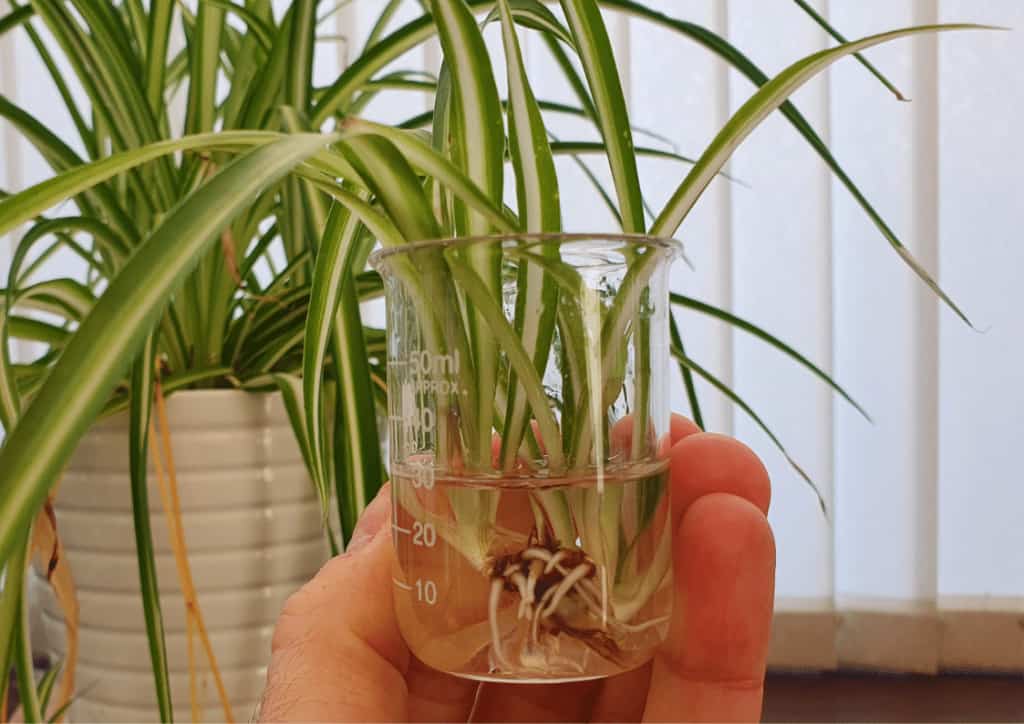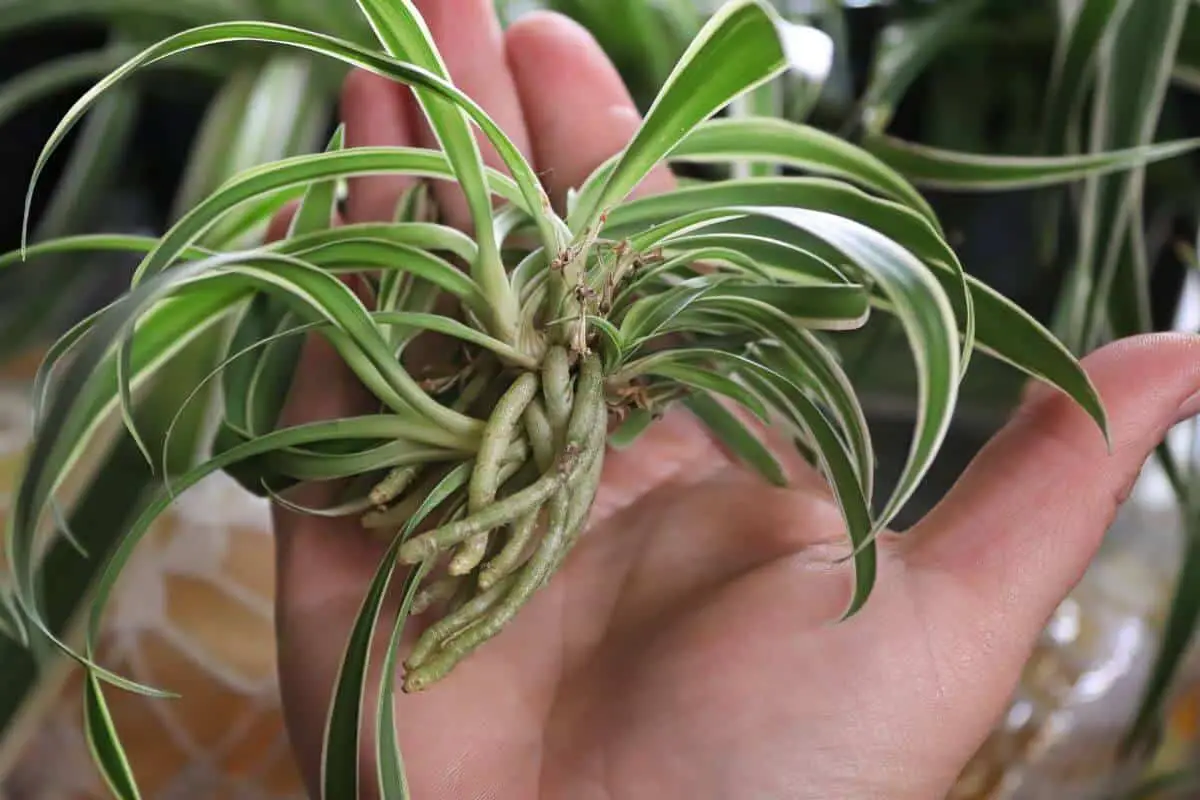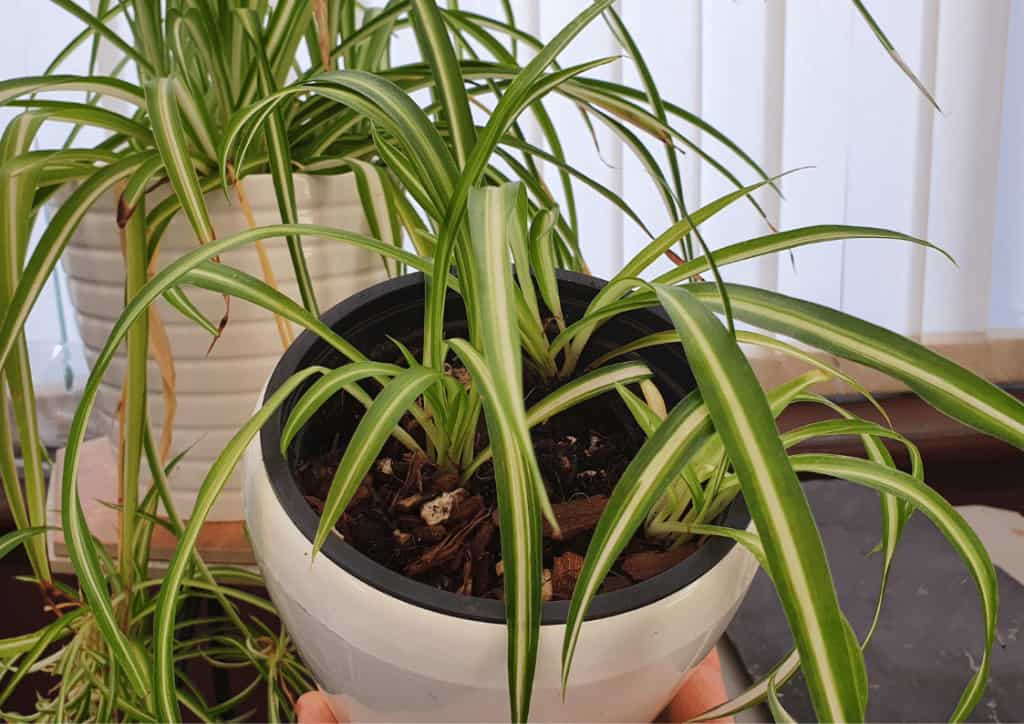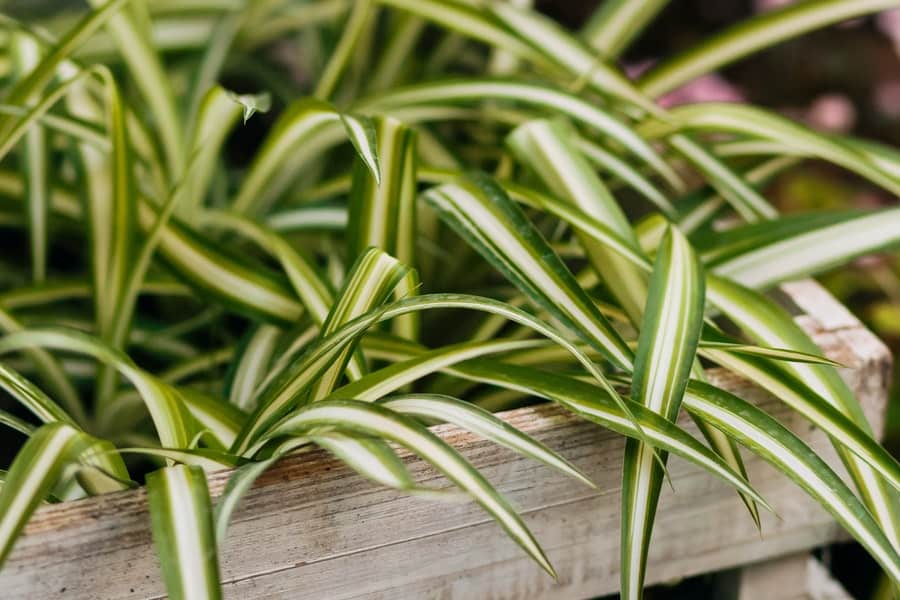Understanding Spider Plant Babies: What Are They?
Spider plant babies, also known as spiderettes, are the small white flowers that grow on the ends of long stems, or stolons, of the spider plant (Chlorophytum comosum). These babies are a natural part of the spider plant’s life cycle and serve as a means of propagation. As the plant matures, it produces these stolons, which can grow up to 2 feet long, and at the end of each stolon, a small white flower blooms, eventually developing into a baby plant.
The spider plant’s unique ability to produce these babies is a result of its adaptation to its environment. In the wild, spider plants use their stolons to spread out and colonize new areas, increasing their chances of survival. When grown indoors, this same mechanism allows the plant to produce new offspring, making it a popular choice for plant enthusiasts.
Spider plant babies are an essential part of the plant’s life cycle, and understanding their purpose can help you make informed decisions about their care. If you’re wondering whether you should cut the babies off your spider plant, it’s essential to consider the potential benefits and drawbacks of doing so. By leaving the babies intact, you can encourage the plant to produce more offspring, but this may also lead to a crowded pot and reduced growth. On the other hand, pruning the babies can help the mother plant focus its energy on producing more leaves and stems, but this may also reduce the plant’s ability to propagate.
As you consider the fate of your spider plant’s babies, keep in mind that the decision ultimately depends on your goals and preferences. If you’re looking to propagate new plants, leaving the babies intact may be the best option. However, if you’re looking to maintain a neat and tidy plant, pruning the babies may be the way to go. In the next section, we’ll explore the potential benefits of pruning spider plant babies in more detail.
Why You Might Want to Cut Off Spider Plant Babies
While spider plant babies can be a delightful addition to your plant, there are several reasons why you might want to consider cutting them off. One of the primary benefits of pruning spider plant babies is that it can encourage the mother plant to focus its energy on producing more leaves and stems. When a spider plant produces babies, it can divert a significant amount of energy towards their growth and development. By cutting off the babies, you can redirect this energy towards the mother plant, promoting healthier and more robust growth.
Another reason to consider pruning spider plant babies is that it can help prevent the plant from becoming too leggy. When spider plants produce long stolons with babies at the end, they can start to look a bit unkempt and leggy. By cutting off the babies, you can encourage the plant to produce more compact growth, making it look fuller and more attractive.
In addition, pruning spider plant babies can also help to increase air circulation around the plant, which can help to prevent fungal diseases and other problems. When the babies are left intact, they can create a humid microclimate around the plant, which can be conducive to disease. By cutting them off, you can improve air circulation and reduce the risk of disease.
It’s worth noting that pruning spider plant babies is not a one-time task. Spider plants are prolific producers, and they will continue to produce new babies throughout their lives. To keep your plant looking its best, you may need to prune the babies regularly. In the next section, we’ll provide a step-by-step guide on how to prune spider plant babies, including the best tools to use and the optimal time to prune.
How to Prune Spider Plant Babies: A Step-by-Step Guide
Pruning spider plant babies is a relatively simple process that requires a few basic tools and some care. Here’s a step-by-step guide on how to prune your spider plant babies:
**Step 1: Gather Your Tools**
You’ll need a pair of clean, sharp scissors or pruning shears, and a small pot or container to collect the pruned babies.
**Step 2: Inspect the Plant**
Before you start pruning, inspect the plant to identify the babies that are ready to be cut. Look for babies that are at least 1-2 inches long and have a small root system.
**Step 3: Cut the Babies**
Using your scissors or pruning shears, carefully cut the babies from the mother plant, leaving about 1-2 inches of stem attached to the baby. Make sure to cut just above a node (where a leaf meets the stem), as this will help the baby plant to develop its own roots.
**Step 4: Pot the Babies**
Once you’ve cut the babies, pot them in a small container filled with a well-draining potting mix. Water the soil gently but thoroughly, and provide the babies with bright, indirect light.
**Step 5: Care for the Pruned Plant**
After pruning, make sure to provide the mother plant with plenty of water and nutrients. You can also fertilize the plant with a balanced fertilizer to promote healthy growth.
**Tips and Variations**
When pruning spider plant babies, it’s essential to make clean cuts and avoid damaging the mother plant. You can also propagate the babies in water or a propagation tray, but potting them in soil is generally the most effective method.
By following these steps, you can successfully prune your spider plant babies and encourage healthy growth. Remember to prune your spider plant regularly to maintain its shape and promote new growth.
The Pros and Cons of Leaving Spider Plant Babies Intact
Leaving spider plant babies intact can be a great way to encourage propagation and create new plants. However, it’s essential to weigh the advantages and disadvantages of this approach before making a decision.
**Advantages of Leaving Spider Plant Babies Intact:**
One of the primary benefits of leaving spider plant babies intact is that it allows for increased propagation. By leaving the babies on the mother plant, you can encourage the plant to produce more babies, which can then be used to create new plants. This can be a great way to share plants with friends and family or to create new plants for yourself.
Another advantage of leaving spider plant babies intact is that it can add visual interest to the plant. The babies can create a beautiful, cascading effect, making the plant more attractive and dynamic.
**Disadvantages of Leaving Spider Plant Babies Intact:**
One of the primary disadvantages of leaving spider plant babies intact is that it can lead to overcrowding. If the babies are left on the mother plant for too long, they can start to compete with the mother plant for resources, leading to reduced growth and health.
Another disadvantage of leaving spider plant babies intact is that it can make the plant more prone to disease. The babies can create a humid microclimate around the plant, which can be conducive to fungal diseases and other problems.
**When to Leave Spider Plant Babies Intact:**
If you’re looking to encourage propagation and create new plants, leaving spider plant babies intact can be a great option. However, if you’re looking to maintain a neat and tidy plant, pruning the babies may be a better option.
Ultimately, the decision to leave spider plant babies intact or to prune them depends on your goals and preferences. By understanding the pros and cons of each approach, you can make an informed decision that works best for you and your plant.
Spider Plant Propagation: How to Use Babies to Create New Plants
Spider plant babies, also known as spiderettes, are an excellent way to propagate new spider plants. These baby plants grow on the ends of long stems, which can be easily cut and potted to create new plants. Propagating spider plants using babies is a simple and effective way to share plants with friends and family or to expand your own plant collection.
To propagate a spider plant using babies, start by choosing a healthy baby plant with a long stem and a well-developed root system. Cut the stem about an inch below the base of the baby plant using a pair of clean scissors or pruning shears. Make sure to leave a small piece of stem attached to the baby plant to help it absorb water and nutrients.
Next, pot the baby plant in a well-draining potting mix, such as a mix specifically designed for indoor plants. Water the soil gently but thoroughly, and provide the new plant with bright, indirect light. Keep the soil consistently moist but not waterlogged, and fertilize the plant with a balanced fertilizer once a month.
It’s essential to provide the new plant with the right conditions to thrive. Spider plants prefer temperatures between 60-80°F (15-27°C) and high humidity. To maintain humidity, you can place the pot on a tray filled with water and pebbles or use a humidifier nearby.
With proper care, the new plant should start to grow and develop its own roots and leaves within a few weeks. It’s not uncommon for spider plants to produce their own babies within a few months of propagation, which can be cut and potted to create even more new plants.
When deciding whether to cut the babies off your spider plant, consider whether you want to propagate new plants or encourage the mother plant to focus its energy on producing more leaves and stems. If you do decide to cut the babies, make sure to do so carefully and provide the new plants with the right conditions to thrive.
By following these simple steps, you can successfully propagate new spider plants using babies and enjoy the many benefits of these beautiful and low-maintenance plants. Whether you’re a seasoned plant enthusiast or just starting out, spider plant propagation is a great way to share plants with others and expand your own plant collection.
Common Mistakes to Avoid When Pruning Spider Plant Babies
When pruning spider plant babies, it’s essential to avoid common mistakes that can harm the plant or reduce its chances of successful propagation. By being aware of these mistakes, you can ensure a healthy and thriving plant.
One of the most common mistakes is pruning too much of the plant at once. Spider plants can be sensitive to over-pruning, which can cause stress and lead to disease or pest issues. To avoid this, prune only what is necessary, and make clean cuts just above a node (where a leaf meets the stem).
Another mistake is not using clean tools. Dirty or contaminated tools can spread disease and pests to the plant, so make sure to use sterile scissors or pruning shears. Dip the tools in a mixture of 1 part bleach to 9 parts water for 10-15 minutes to disinfect them.
Not providing enough care to the pruned plant is also a common mistake. After pruning, make sure to water the plant thoroughly and provide it with bright, indirect light. Keep the soil consistently moist but not waterlogged, and fertilize the plant with a balanced fertilizer once a month.
Pruning at the wrong time can also be detrimental to the plant. Spider plants typically produce babies in the spring and summer months, so it’s best to prune during this time. Avoid pruning in the fall or winter when the plant is dormant, as this can cause stress and reduce its chances of successful propagation.
Finally, not monitoring the plant’s response to pruning is a mistake that can lead to further problems. Keep an eye on the plant’s condition after pruning, and adjust your care routine as needed. If the plant appears stressed or diseased, take action promptly to prevent further damage.
By avoiding these common mistakes, you can ensure a healthy and thriving spider plant. Remember to prune carefully and provide the right care to the pruned plant, and you’ll be on your way to successful propagation and a lush, beautiful plant.
When deciding whether to cut the babies off your spider plant, consider the potential benefits and drawbacks of pruning. If you do decide to prune, make sure to do so carefully and avoid common mistakes that can harm the plant. With the right care and attention, your spider plant will thrive and provide you with beautiful foliage and plenty of babies to propagate.
Spider Plant Care Tips: How to Keep Your Plant Thriving
Spider plants are relatively low-maintenance plants that can thrive in a variety of conditions. However, to keep your spider plant healthy and thriving, it’s essential to provide it with the right care. Here are some general spider plant care tips to help you keep your plant happy and flourishing.
Watering is one of the most critical aspects of spider plant care. Spider plants prefer well-draining soil and should be watered thoroughly, allowing the soil to dry slightly between waterings. Overwatering can lead to root rot, while underwatering can cause the leaves to become scorched. Check the soil moisture by sticking your finger into the soil up to the first knuckle. If the soil feels dry, it’s time to water.
Fertilization is also essential for spider plant care. Feed your spider plant with a balanced fertilizer during the growing season (spring and summer). Dilute the fertilizer to half the recommended strength to avoid burning the roots. You can also use a fertilizer specifically formulated for indoor plants.
Lighting is another crucial factor in spider plant care. Spider plants prefer bright, indirect light but can tolerate low light conditions. Direct sunlight can cause the leaves to become scorched, so it’s best to provide filtered or dappled light. East- or west-facing windows are ideal for spider plants.
Temperature is also important for spider plant care. Spider plants prefer temperatures between 60-80°F (15-27°C) during the day and no lower than 55°F (13°C) at night. Avoid placing your spider plant near heating or cooling vents, fireplaces, or drafty windows.
Humidity is also a consideration for spider plant care. Spider plants prefer a relatively high humidity, but they can adapt to average humidity levels. To maintain humidity, you can place the pot on a tray filled with water and pebbles or use a humidifier nearby.
Pruning is also an essential part of spider plant care. Regular pruning can help maintain the plant’s shape, encourage new growth, and prevent the plant from becoming leggy. Remove any dead or damaged leaves or stems, and cut back overgrown stems to maintain the plant’s shape.
By following these spider plant care tips, you can keep your plant healthy and thriving. Remember to monitor your plant’s response to its environment and adjust your care routine accordingly. With proper care, your spider plant will reward you with beautiful foliage and plenty of babies to propagate.
When deciding whether to cut the babies off your spider plant, consider the potential benefits and drawbacks of pruning. If you do decide to prune, make sure to do so carefully and provide the right care to the pruned plant. With the right care and attention, your spider plant will thrive and provide you with beautiful foliage and plenty of babies to propagate.
Conclusion: To Cut or Not to Cut?
When it comes to deciding whether to cut off spider plant babies, the answer ultimately depends on your goals and preferences. If you want to encourage the mother plant to focus its energy on producing more leaves and stems, pruning the babies may be the way to go. On the other hand, if you’re looking to propagate new plants, leaving the babies intact can be a great option.
It’s essential to weigh the pros and cons of each approach and consider what’s best for your plant. By understanding the purpose of spider plant babies and how they form, you can make an informed decision that suits your needs.
Remember, pruning spider plant babies can be beneficial for the mother plant, but it’s crucial to do so carefully and avoid common mistakes. If you do decide to prune, make sure to use clean tools, prune at the right time, and provide the right care to the pruned plant.
On the other hand, leaving spider plant babies intact can lead to increased propagation and a fuller plant. However, it’s essential to monitor the plant’s growth and prune it regularly to prevent it from becoming too crowded.
Ultimately, the decision to cut off spider plant babies is up to you. By considering your goals and the needs of your plant, you can make an informed decision that will help your spider plant thrive.
So, should you cut the babies off your spider plant? The answer is, it depends. If you’re looking to encourage the mother plant to focus its energy on producing more leaves and stems, pruning the babies may be the way to go. However, if you’re looking to propagate new plants, leaving the babies intact can be a great option. By understanding the purpose of spider plant babies and how they form, you can make an informed decision that suits your needs.








